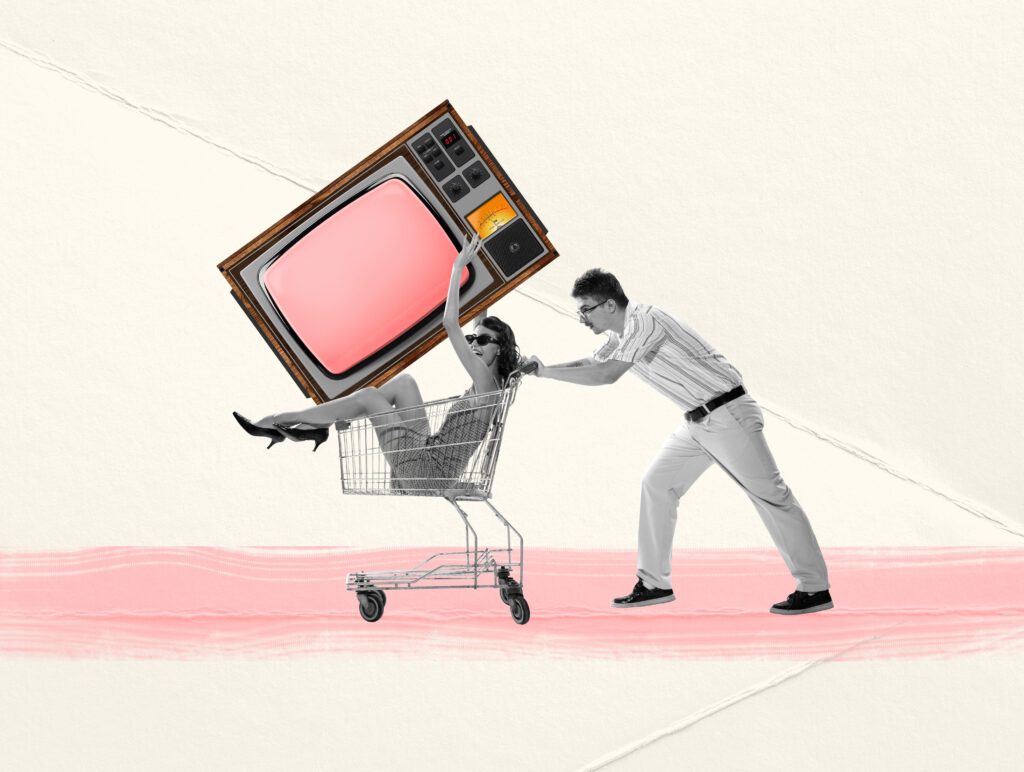Retail media, meet streaming.
Kroger Precision Marketing, the grocer’s retail media arm, announced a deal Wednesday with Disney Advertising to share first-party behavioral data for targeting streaming audiences and measuring the results, including sales and conversions by household.
The partnership is launching in limited beta and will be available as a managed service with a “handful” of CPG advertisers. Disney and Kroger declined to share how many.
The plan is to make the program generally available during the second half of this year.
For now, the test will run on Hulu inventory only, although ESPN+ and Disney+ are on the agenda for “some point down the road,” said Danielle Brown, SVP of data enablement and category strategy at Disney.
In the loop
Both Kroger and Disney have been getting an earful from advertisers and agencies looking for more advanced targeting options and reliable measurement. Those calls have only become louder as the economy has gotten trickier.
Buyers aren’t content with ambiguity, Brown said. “We need a new proof point we can share with our customers.”
There are two aspects to the partnership: targeting and measurement.
Kroger has insights about its customers that it gathers over time, including behavioral data, web engagement data and information from its loyalty program. Roughly 60 million households shop with Kroger every year.
And Disney has its own audience graph of 250 million user IDs, including 100 million household IDs across the US.
As part of the beta, Kroger’s retail media division will use an AI model to recommend the household segments most likely to help an advertiser meet their campaign goals against Disney’s inventory.
Kroger will use LiveRamp to share the IDs with Disney for targeting, after which Kroger will grab the impression logs, also through LiveRamp. Those will then be used to measure the ad exposures and connect them to sales, brand lift or whatever the buyer’s KPI happens to be.
The initial results are promising.
During an alpha test of the program earlier this year, Pepsi saw a “statistically significant” lift in sales and household penetration, said Cara Pratt, SVP of Kroger Precision Marketing.
Empowering publishers
Being able to tie brand impact to conversions is one of the reasons Kroger launched its precision marketing division in 2017.
“We’ve always talked about media accountability, which is really about performance and transparency,” Pratt said. “For that to continue, though, the biggest publishers have to be right there with you.”
But we’re living in a brave new world where retailers are becoming publishers themselves. They have inventory to sell, and their budding ad businesses are fueling an explosion of homegrown media networks.
Even Roku could be considered a publisher if you look at it in a certain light. (Kroger struck a deal with Roku last year to give CPG advertisers access to the grocery chain’s data – and its data science – for targeting and attribution on Roku’s platform.)
But these partnerships are purely collaborative, Pratt said, and there’s no competition for ad dollars.
“Retailers have become publishers,” she said, “but the real energy and excitement is in combining the richness of our audience assets and empowering big content publishers, like Disney, to bring a new level of performance and brand impact.”
‘Learning journey’
Still, performance and brand impact are only valuable if they’re incremental.
To prove this, Kroger creates test and control groups to get visibility into whether its data is helping drive sales that wouldn’t have happened anyway.
“It’s a learning journey,” Pratt said, one that will eventually collide with the debate happening in the TV world about the future of measurement and currency.
“Disney isn’t just talking about alternative currencies,” Pratt said. “They’re bringing a reliable understanding of performance to the forefront, and I think it’s also going to set the stage for other television players to do the same.”


















